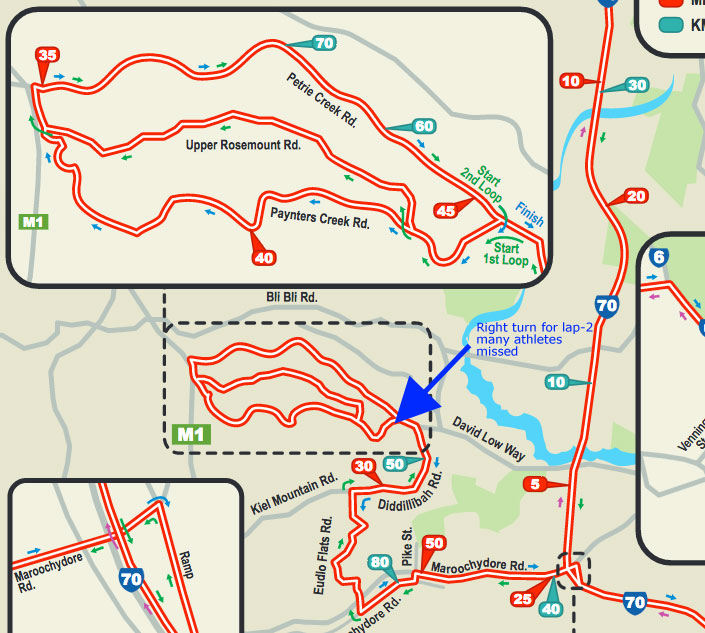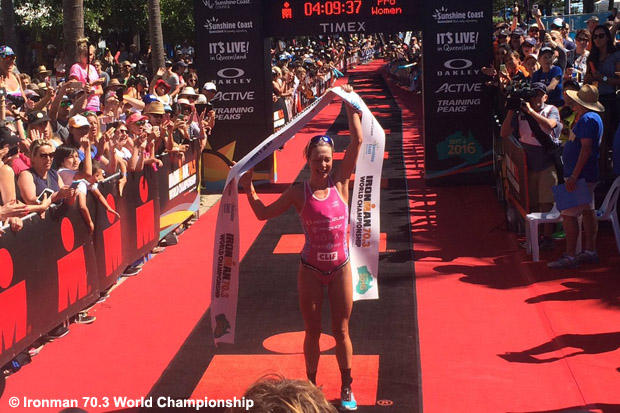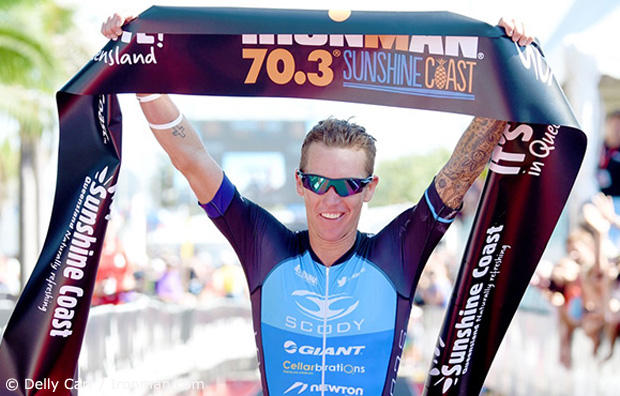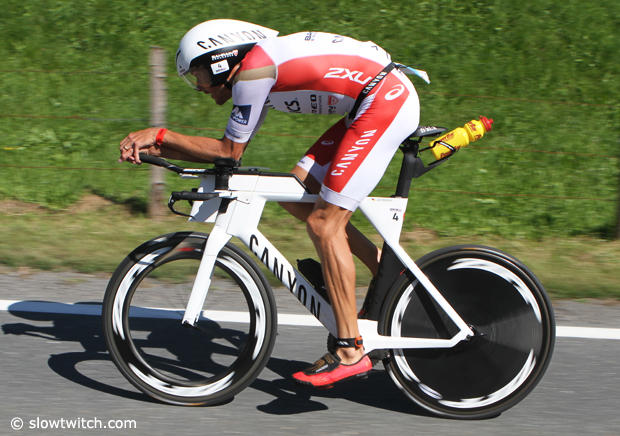Bike Course Confusion at 70.3 WC
An unusually high number, roughly 45 athletes, competing in the Ironman 70.3 World Championships have been given DNFs for not riding the prescribed course.
The bike course at the Mooloolaba race was entirely closed to traffic, a coup for a championship and a major plus for competitors. But some athletes complained of course convolutions and a lack of clear instructions by on-course staff, which made the course hard to follow. This was particularly the case for those who did not drive the course prior to the race.
"Yes I could have ridden the course before hand, or driven it, but that involves another day off work, more accommodation,” wrote competitor Campbell Hanson to Slowtwitch, who is among the almost 4 dozen athletes who fell afoul of a tricky course. "I'd watched the online course video and looked at the maps several times.”

The course begins with a northbound out and back up the coast, and during the return leg the course veers into the hinterlands for a pair of loops (as seen in a portion of the course map reprinted here). The loops are not identical. In the case of Mr. Hanson and several others one loop was ridden twice rather than each loop ridden once. Even though the entire distance ridden was greater in Mr. Hanson’s case because of his mistake (he reports his Garmin total at 91.9km), he was given a DNF for not riding the prescribed course (several others rode Mr. Hanson’s version of the course, and while these riders rode a greater distance the lap they didn’t ride the loop that had the larger climb).
The far more common occurrence was simply riding 1 of the 2 loops, which meant a rider came into T2 having completed roughly 78km of the 90km course. Indeed, Mr. Hanson was about to make this mistake as well until he realized the error while out on the course. He and others saw "another athlete [who] sailed on through,” an intersection where the riders needed to turn to commence lap-2, and they followed. But, "After 300m and seeing that my Garmin only had 62km on it we realized we'd made a mistake.”
Mr. Hanson and at least one other athlete riding with him made a U-turn, went back to the intersection and commenced riding a second lap. Another eyewitness said he "saw many athletes making U-turns,” but it’s unclear where on the course the eyewitness was, and whether this is the spot where he spotted the athletes turning around.
Upwards of about 40 athletes did not make the turn to begin the second lap at all, coming into transition after completing only 1 of the 2 laps. "When we got to the right hand turn to start the second lap the road signs had blown over and there were no officials there,” wrote Mr. Hanson, and "the people that were standing around didn't look very official and were not doing anything constructive.”
“The turn for the second loop was not clearly marked or manned,” wrote competitor Darren Franken, "and a number of athletes consequently went or were directed the wrong way, missed a timing marker and did not complete 10 km of the race.”
The list of those given DNFs show that many are seasoned veterans of 70.3 Worlds, having traveled to prior championships, bolstering the view that these competitors intended to complete the prescribed course. "The athletes caught up in this mess include many international and Australian athletes and a number of top 10 contenders,” wrote Mr. Franken. This is perhaps why these athletes were listed as DNFs rather than DQs.
We asked Ironman a number of questions about the course and how this was handled, and no reply has been received as of this writing.
Some, however, fault some of these athletes for not realizing that, as one put it, "their time doesn't add up, and they have massively outperformed [and who] apparently won't put the hand up and say 'that is not possible, I have missed something out there!’”
But some did own their mistakes. "It was very disappointing yesterday to discover after finishing the race that something had gone wrong,” wrote Mr. Franken. "When we got back to the hotel room and checked the splits we realized that the bike split was too fast. We immediately went down to the officials tent and reported there was some error.”
Indeed, some of the competitors felt the communication should have come to them from Ironman. "I thought I had completed the full course and could not work out where the error was,” wrote Mr. Franken. "I left all my details and contact information with the officials but was not contacted back. It is disappointing that the issue occurred at all, but even worse to not have anyone from WTC make an effort to contact me, let me know what had happened or acknowledge the issue."
It was, "by far the worst marshaling on a bike course I've ever seen,"wrote Mr. Campbell. "It should have been a wrist band set up to ensure that everyone rode the correct loops, the marshals should have been better informed and road markings and cones were way too small and not clear enough.”
A family member of one of the affected athletes said she was told, "the problem on course was realized during the race and mostly impacted the earlier waves as some action was taken to rectify."
Still, the vast majority of athletes, more than 2,500, did complete the bike course correctly. "I accept full responsibility as I missed the turn,” said Mr. Campbell, "and although there were many others that made the same errors, the majority of the athletes got it right.”




